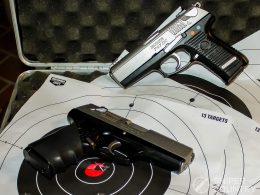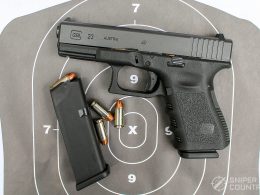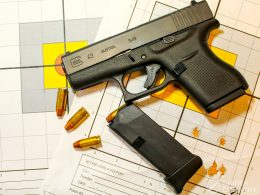In this Article:
Those of you who read my reviews and articles know that I am by and large a handgun guy. I cut my shooting teeth on that type of firearm. I guess growing up in a state that did not allow “regular†rifle calibers for deer hunting (only pistol calibers were legal) until fairly recently may have had something to do with my bias towards the short arm. Enter some new regulations for deer hunting and the proliferation of coyotes in the fields across the road from our front yard and bingo – rifles are cool! I have the required .22, a Ruger 10/22 along with several others. The one that has taken the most deer is a Savage Axis II XP in .243.
- Adjustable Accutrigger
- Pillar bedded stock
- Large tang safety
- Detachable box magazine
- Durable and reliable
- Great value
- Good action
- Cost-effective
- Crappy stock
- Plastic clip on magazine
BONUS OFFER: Get your free shooting range targets to print at home!
Get your free targets to print at home!
A Little Backstory
I never really thought about owning such a critter much before a few years ago until the deer laws changed and the coyotes developed even-more-pushy personalities. Then I thought that it might be good to have something that could reach out farther than my .44 Magnum S&W could, which this gun does admirably. (I was a deer hunter before but I used that .44 and a Ruger .45 Colt – I am in the approximate 1% of hunters in my state that take deer with a handgun. The latest actual statistics are available for 2016, with the percentage of deer kills by a handgun at around .5%). Why do I mention this? I just want to make the point that I was a dedicated handgun hunter but wanted to expand my universe to include a centerfire rifle that didn’t shoot a pistol cartridge, and I found a dandy.
OK…enough about that. This review is about the Savage Axis IIXP. I think one of the best ways to talk about one rifle is to compare it with a similar rifle from another manufacturer. I had the opportunity to check out a Mossberg Patriot Predator that belongs to one of our sons – let’s look at both guns and then go from there.
The Savage Axis II XP
Savage is a company that has been around a while. The company was founded in 1894 by Arthur Savage in Utica, New York. Within a few years they were making rifles, handguns and ammunition. They built the first hammerless lever-action rifle, the model 1895. A lot of shooters don’t know that Savage was one of the two finalists in the Army’s pistol trials that ended with the adoption of the Colt Model of 1911 .45 ACP. I discovered that fact when I was researching the old warhorse and its cartridge for an earlier article. You can read about the Colt’s history, and the .45 ACP’s. Needless to say, the Colt won the contract but what is interesting is the fact that the Savage made it to the finals. This, from a company that now is known for its rifles – not handguns. The company, after merging with another company, produced Lewis machine guns during WWI.
In 1919, this logo made its first appearance:
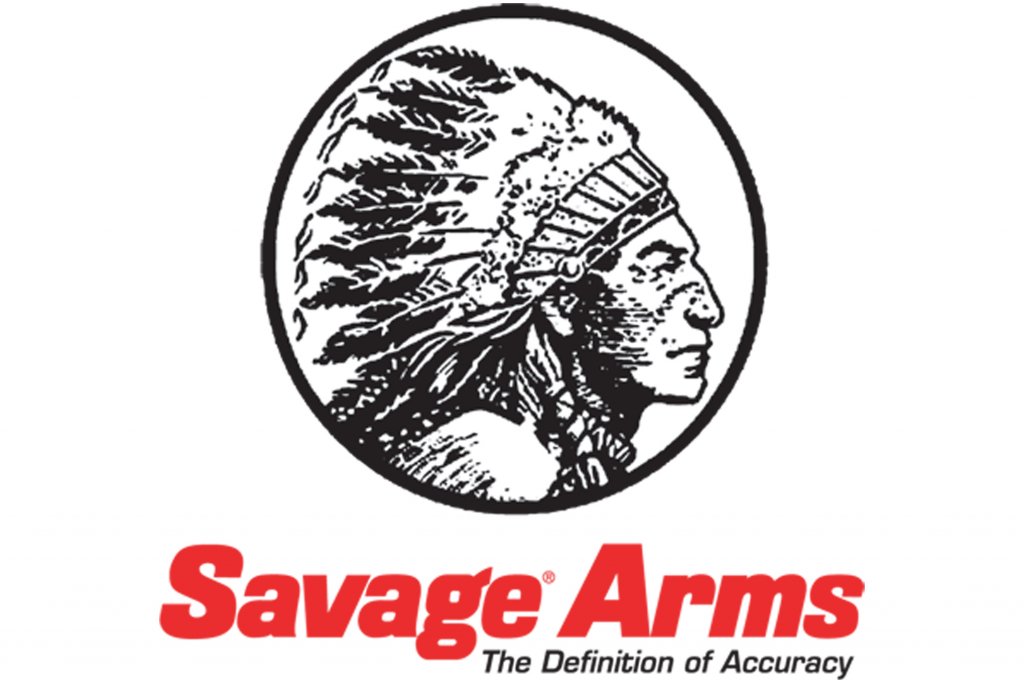
How do we go from a company in New York to a logo with the head of this distinguished gentleman? Well, that was the year that Chief Lame Deer approached Arthur Savage about building rifles at a discount for his tribe in New York in exchange for his likeness and a yearly fee. It’s interesting to note that the fee has been paid yearly, right up through 2018. Now, Savage uses a logo that looks like this:
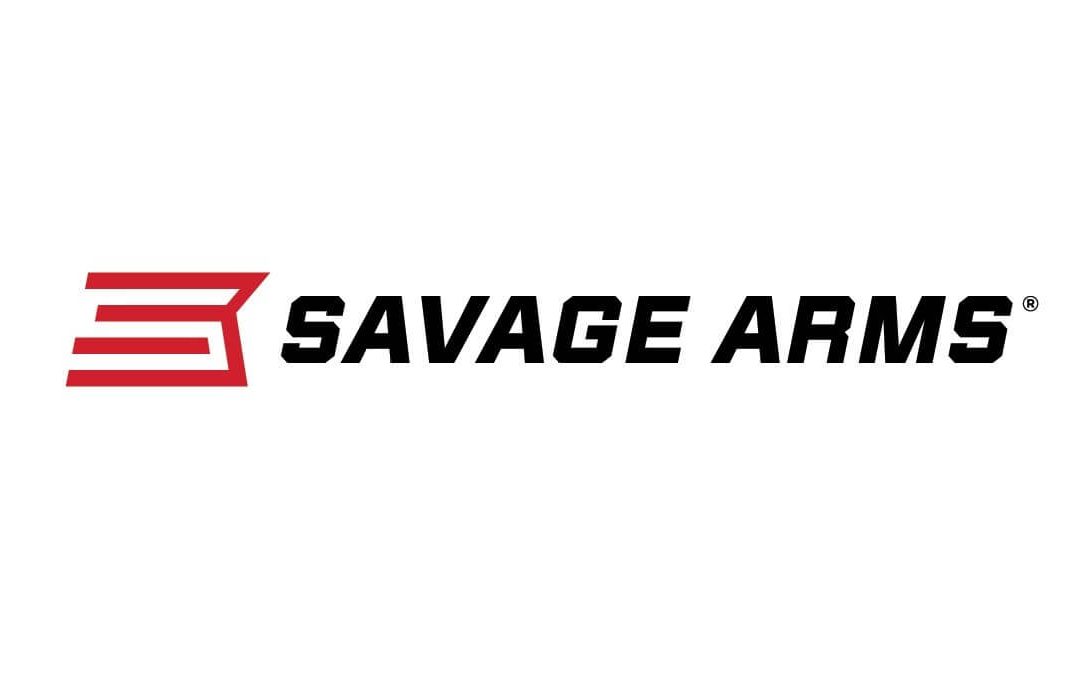
I’ll leave it to you, dear reader, as to why the company changed its logo.
On with the story – in 1920, Savage acquired the Stevens Arms company and followed it up nine years later by buying the A.H. Fox Gun Company and moving its production to Utica. Fox was known for its fine shotguns, and Stevens had made popular the rifle-shotgun combination gun. This allowed Savage to expand production into these areas, with the model 39 combination rifle-shotgun being introduced in 1939 and a line of inexpensive double-barrel shotguns around that time. WWII saw the company making Thompson sub-machine guns and Lee-Enfield rifles for the British. To hurry this narrative up a little, know that the company filed for bankruptcy in 1988, but emerged from those ashes very strong.
The famous AccuTrigger was introduced in 2002, and the company was named Manufacturer of the Year in 2003 by the Shooting Industry Academy of Excellence. The rest is fairly evident if walk into a gun shop and see a Savage rifle for sale – they’re doing pretty well, by all measurements of success. Another indicator is the variety of rifles they make – a visit to their website yields too many models to name. They make a lot of rifles.
Comparing Two Budget Rifles
Now, let’s look at specific rifles. As far as the caliber of my Savage rifle, I settled on the .243 Winchester one day when I was in my friend Duane’s gun shop and saw his display of Ruger and Savage bargain rifles. With this caliber, I could hunt deer, coyotes and other small-to-medium size critters. I call them “bargain†guns because they cost less than $500, my arbitrary budget-price cut-off point. The Savage Axis II XP lists for $495 but I paid much less for it at the shop, and it even included a Bushnell Banner 3x9x40 scope. (I know, that’s not a great scope but mine works like a charm).
Being the unrepentant reloader that I am, I immediately got a set of dies, some bullets (couldn’t use my home-cast here), and the proper powders. I started putting together some loads using once-fired Winchester factory cases. I was rewarded, eventually, with small groups but the group that got my attention was one three-shot group that was fired with Winchester factory stuff which measured .41 inch – more on shooting this rifle later. My handloads were not far off that mark.
I subsequently learned that the aged .243 is one of the more accurate rifle calibers out there, being based on the .308 case and for other reasons. That meant short-action rifles could chamber it which opened up a vista of possibilities back in 1955 when it was introduced. The thing just took off, being an accurate, versatile caliber with very little recoil. So, I ended up with the Savage in .243.
Popular Articles
The Mossberg Patriot Predator
The other budget rifle I would like to use for comparison is the Mossberg Patriot Predator. This is a popular gun that sells very well and is in the same price range as my Savage. Son Andy picked up one of these rifles at the same shop a while later. This rifle was either a trade-in or consignment (probably the latter) that had obviously never been shot. (I think I remember being told that it had been won in a raffle by its previous owner).
It was chambered in the modern super-duper caliber, 6.5 Creedmoor. This caliber has taken off like a bat out of you-know-where. Introduced by Hornady in 2007, this round (like the .243) was originally based on the .308 case. Developed for long-range target shooting, the 6.5 Creedmoor has earned its share of kudos in that arena but we also know it is popular with hunters. .264-caliber bullets are generally known for their high sectional density and ballistic coefficients. This allows them to be accurate and effective at long ranges.
Development occurred via a partnership between Hornady Senior Ballistics Scientist Dave Emary and Dennis DeMille, VP of product development for Creedmoor Sports. Now we see where the name comes from. At any rate, Andy had for all intents and purposes a new Mossberg in this great caliber – he also has a Savage .308 that he likes but he’ll be carrying the Mossberg in the deer woods this fall.
Now that we’ve had a bit of history about these two calibers, let’s look at the rifles. Here are specifications for each of them – we’ll look at these first then get into a bit more detail later.
Why I Like The Savage
I like my Savage. I understand that it is an entry-level rifle, but also know that, if I wanted a more sophisticated platform, I could stay within the Savage brand and get a real uptown model, with all the bells & whistles. The advantage of being able to do that is that you can learn on a “beginner†rifle, switch to a more advanced model and not have to learn new ways of operating said rifle. The procedures stay pretty much the same. Now, I get it – most manufacturers make what Sears used to call “good-better-best” rifles, but I like the Savage.
The trigger is an improvement over the older plain-Axis models and is all I need. (The .41-inch-group I show below is proof of that). The safety is in exactly the right spot for this left-hander…right on top of the stock wrist, behind the bolt. That is huge. I was sitting in a deer blind with my son, who had an older wood-stock Savage 110 variation in .308, and watched him as he took his gun off safe to get ready for a shot. He very slightly moved his hand in order to disengage the safety. Now, if we were sitting in the open, that could be enough to put wings under that deer and “there he was…gone!â€. I’ve had deer spook with lesser movement. We learn by doing. My point being that, when the time came for me to break the shot, I slid my thumb to the tang-mounted safety and “snicked†it off with no perceivable motion that could give me away. This is a very small thing, but those of you out there who’ve been in similar circumstances know what I’m talking about.
BONUS OFFER: Get your free shooting range targets to print at home!
Get your free targets to print at home!
Another thing I like about my rifle is the texturing on the forend and on the pistol grip. We hunt in November and December, and brother, it can be cold here. Add in a pair of insulated gloves and it doesn’t take much of a mis-move to drop your rifle. The texturing allows me to get a firm grasp on the gun and to keep my hands there, even with bulky gloves on. I’ve experienced slick stocks on both long guns and handguns, and it’s not fun to have to try to catch the gun as it slips from your frozen fingers.
One last plus is the accuracy. I know that rifle accuracy can be an ephemeral, flighty thing that doesn’t always fall on the gun you have in your hands at the time. It just seems that the Axis IIXP is born accurate, at least those that belong to some shooters I’ve talked with. Mind, mine is the bargain-basement model that sells for around $400 with a scope and is not the almost-custom-shop level guns that Savage also makes. I was truly impressed with this rifle, especially when it shot a less-than-half minute of angle group at 100 yards. I said up top that I am a handgun guy, first and foremost, and for me to get a group like that, this gun must be something sort of special. One can forgive a rifle almost any fault, but if it ain’t accurate, nobody wants it.
OK. I said we were going to look at the Savage alongside the Mossberg, so let’s look at some specifications…
Savage Axis II XP vs Mossberg Patriot Predator
| Savage Axis II XP | Mossberg Patriot Predator | |
|---|---|---|
| MSRP: | $495 | $540 |
| Action: | Bolt | Bolt |
| Barrel Color: | Black | Cerakote Patriot Brown |
| Barrel Finish: | Matte | Matte |
| Barrel Length: | 20 in. | 22 in. |
| Barrel Material: | Carbon Steel | Carbon Steel |
| Caliber: | 243 Winchester | 6.5 Creedmoor |
| Magazine Capacity: | 4, detachable box | 5, detachable box |
| Length of Pull: | 12.75 in. | 13.75 in. |
| Overall Length: | 39.5 in. | 42.25 in. |
| Rate of Twist: | 1 in 9.25 in. | 1 in 8 in. |
| Receiver Color: | Black | Cerakote Patriot Brown |
| Receiver Finish: | Matte | Matte |
| Receiver Material: | Carbon Steel | Carbon Steel |
| Stock Color: | Black | Strata Camo |
| Stock Finish: | Matte | Matte |
| Stock Material: | Synthetic | Synthetic |
| Stock Type: | Sporter | Sporter |
| Weight: | 7.3 lbs. | 6.5 lbs. |
The rifles are similar enough to each other, with a few exceptions. They both shot very well, with about the same felt recoil – that is, not a lot. The .243 delivers about 9 lbs. of recoil with the 6.5 dishing up just a tad more. At any rate, these guns are not going to punish your shoulder. One main difference between the two is that the Mossberg has a threaded barrel and would accept a muzzle device of some sort – suppressor, muzzle brake – although I’m not sure why you’d put a muzzle brake on this barely-recoiling rifle. Suppressor, possibly but then you get into the subsonic debate.
The 6.5 Creedmoor was not meant to be fired in subsonic form. The weight difference is not all that great – hard to tell by carrying one after the other. The stock – ah, there’s the difference. Although both stocks are synthetic, the Mossberg’s camo stock seems more at home in the woods. But, I’ve hunted more than one season with my Savage and the matte black stock disappears in a hunting blind. I’ll keep my matte black stock just the way it is, thank you. And, speaking of stocks, I can’t hit home enough about the texturing that Savage puts into their synthetic stocks (at least they did when they made this series of Axis rifles).
Triggers
Let’s talk for just a minute on the two triggers these rifles employ. The Savage uses what they call the AccuTrigger. They have a short video about their trigger – you can watch it here. Basically, it’s a pre-set, light trigger that is user-adjustable for pull length – if you want a longer pull or shorter, you can do that. The blade in the trigger is called the AccuRelease (marketing…). It catches the sear if the gun is jarred or dropped, preventing the rifle from firing inadvertently.
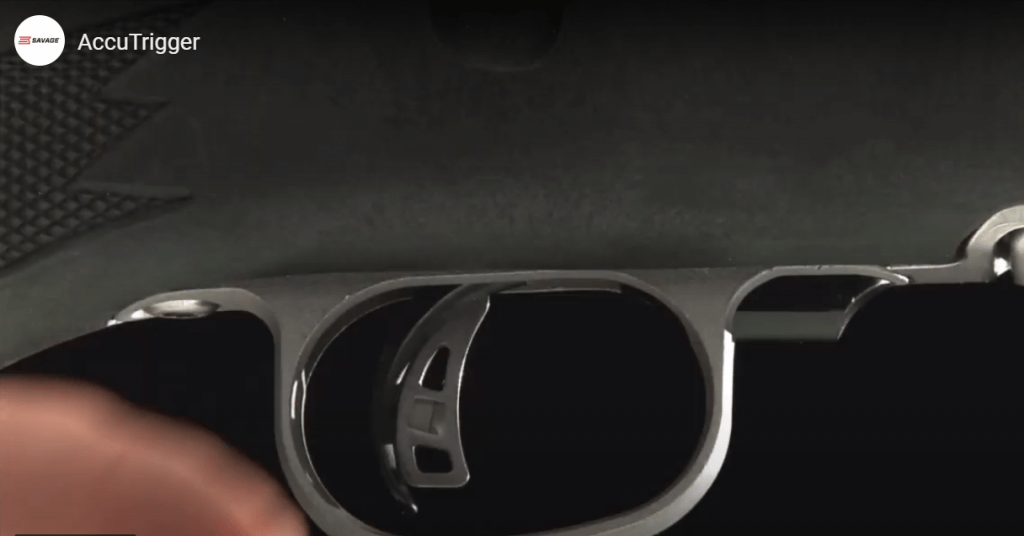
About all I could find out about the Mossberg LBA (Lightning Bolt Action) adjustable trigger is that it is user-adjustable from 2 – 7 pounds…
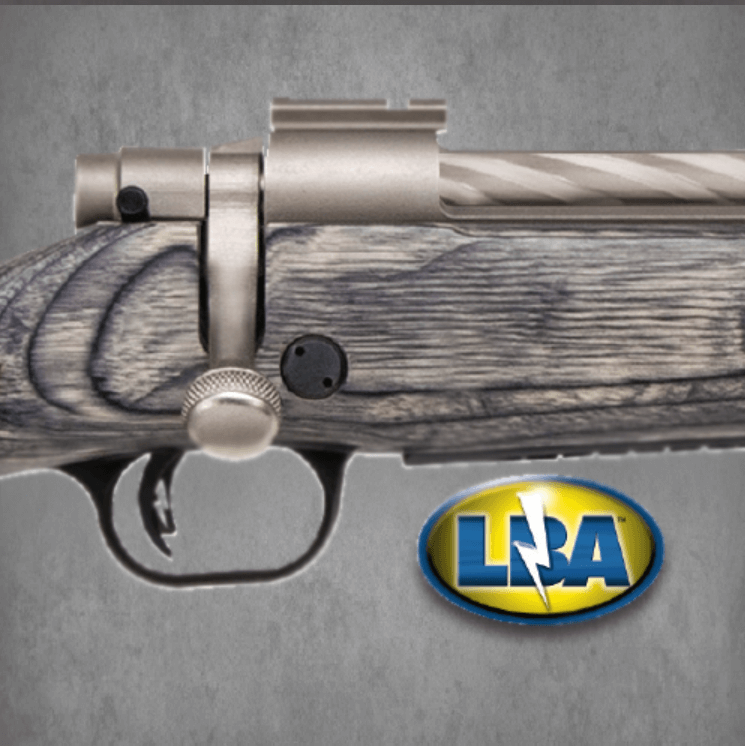
The thing about triggers on most any modern rifle is that they are light years ahead of the stock trigger on an entry-level budget rifle of years ago. These triggers allow some really nice shooting to happen without the added expense of going to an aftermarket trigger or paying a gunsmith beaucoup bucks to work on it. Can you do better? Of course. The top-line target rifles will have a more sensitive, adjustable trigger – in some cases, with a pull weight of down to a few ounces. On a hunting gun, though, you don’t really want an ultralight trigger. It’s too easy to snag the trigger guard on a branch, with an ensuing “kaboom†as a result. For entry-level hunting guns, these triggers are fine. The Mossberg’s trigger did feel a bit “mushier†than that in the Savage, although the final results feel fairly equal. That sub-MOA group I shot with the Savage is proof that the trigger works. (I did not get a chance to measure the rifles’ trigger pulls with my Lyman gauge but, rest assured, both triggers are very usable the way they sit).
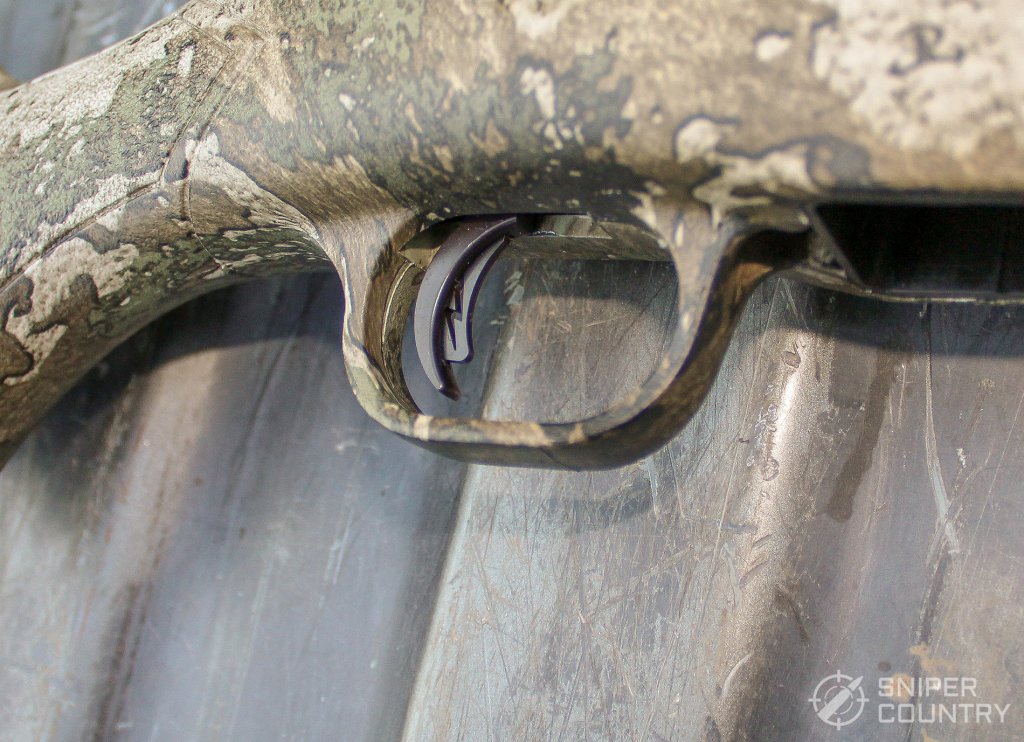
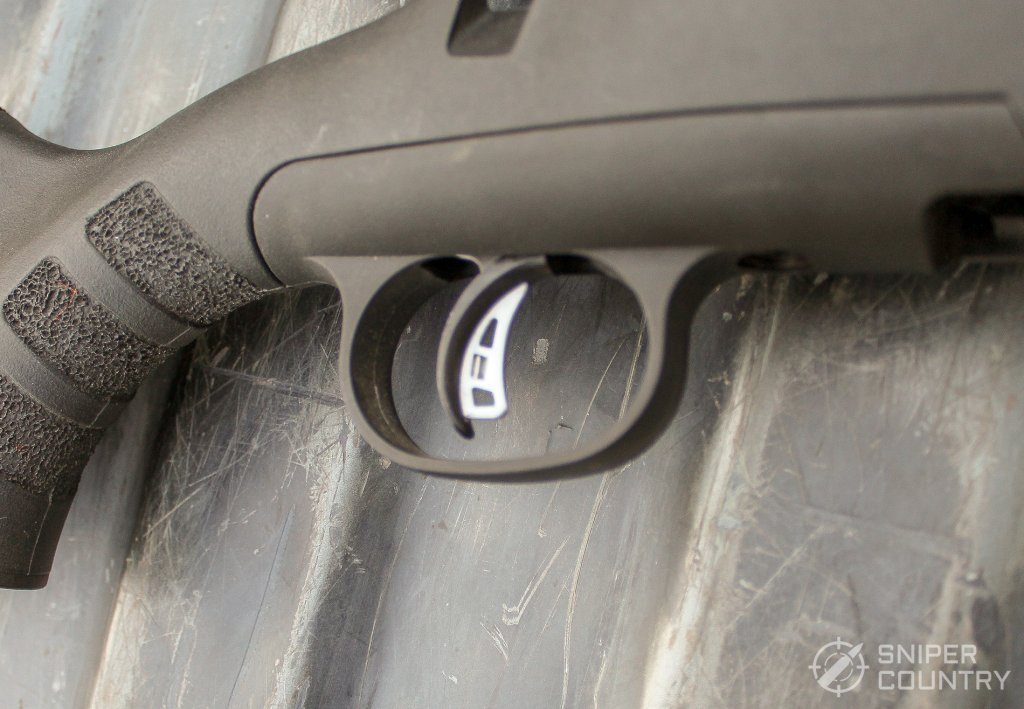
Each of these rifles shot at least MOA groups, so I think the triggers pass muster. Now, let’s look at the stocks…
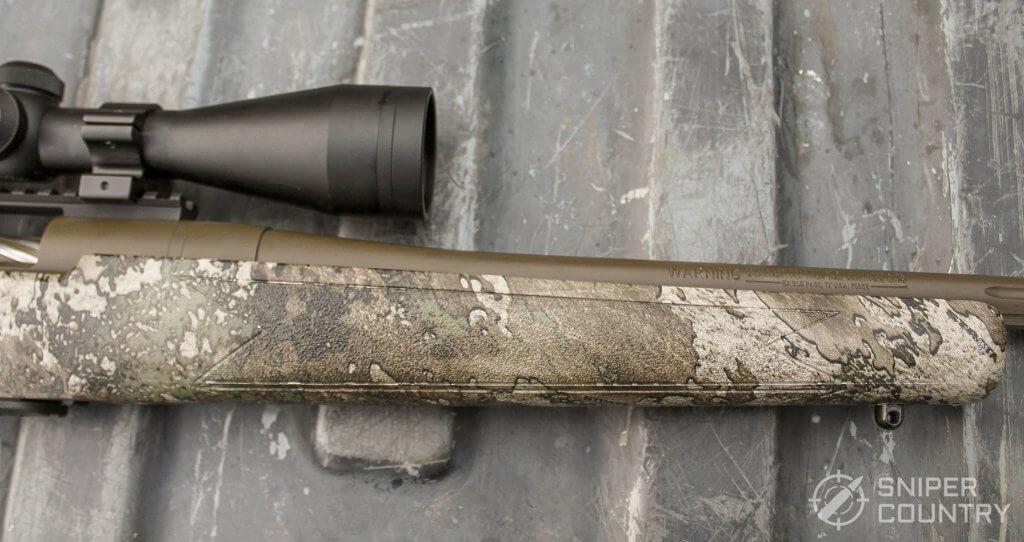
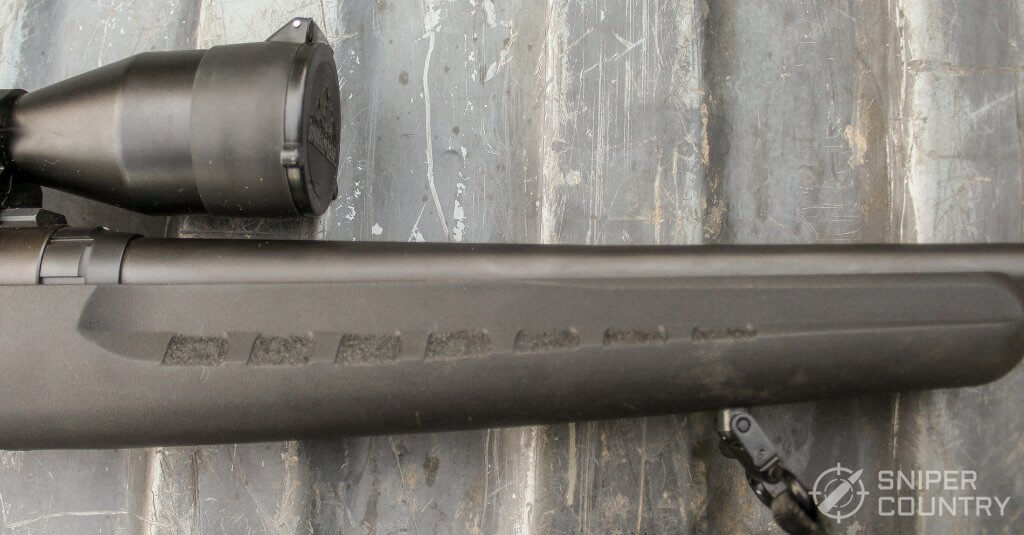
Both barrels are free-floated to the receiver. Notice the bit of texturing on the Savage – this does help if your hands are wet or cold.
Working our way rearward, here are the pistol grips. First, the Mossberg then the Savage. Again, there is more texturing on the Savage than on the Mossberg.
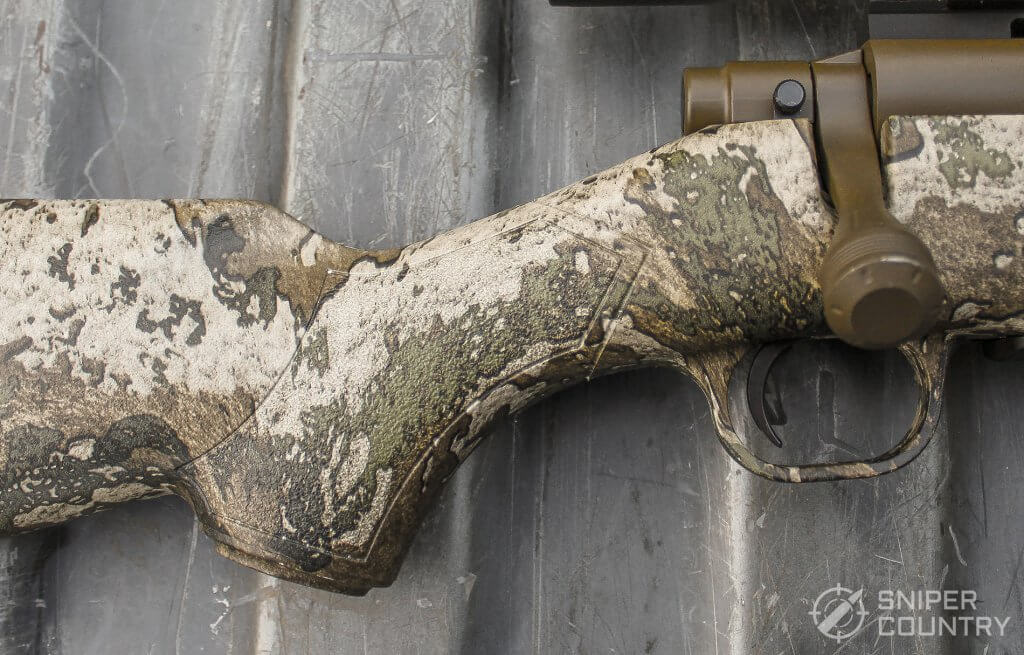
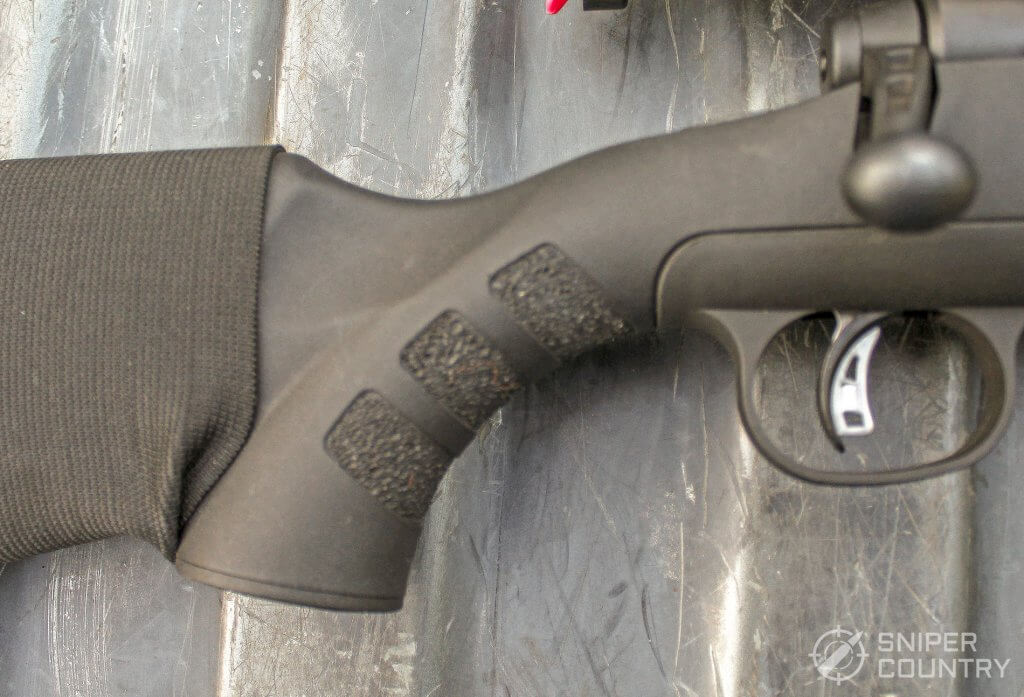
Now, the buttstocks. I didn’t take photos of the stocks because they are virtually identical. Each gun has a nice pad on the buttstock, with the Savage’s pad ventilated.
As far as these stocks go, they are inexpensively made (relatively) and tend to be a bit “whippy.†From a bench, the rifles are fine, but you might want to be aware of the flex factor. If you lean against a tree as an impromptu rest, try to keep even pressure on the forend. Not a big deal, just something to keep in mind. I use shooting sticks in the blind, either a monopod or bipod. That keeps the pressure on the bottom of the stock, not on just one side. The Savage stock seemed to be made of a bit thicker blend of plastic – it didn’t feel quite as “flexible†as the Mossberg stock, but that could have been me.
Bolts
The bolts are similar, with two locking lugs, a single claw extractor, and a spring-loaded ejector. There is not a whole lot of difference between these bolt faces than the bolt that was in my early-20th-century 8mm Mauser 24/47 surplus rifle. I guess the old saying still applies – if it ain’t broke, don’t fix it. The fluting on the Mossberg’s bolt body adds to the pizzazz factor and helps the bolt ride smoothly in the channel. But… I’ve never had a problem with my Savage’s bolt binding. Both are slicker than grease on a glass doorknob.
One thing about the bolt lift – each one of these requires a bit of effort to lift the bolt handle. I just figure that a slightly stiff bolt lift is endemic to the breed of lesser-expensive rifles. Again, no big deal, as this will even out with more shooting. A real plus about the Savage bolt is that it is very hard to get the bolt to bind when pushing on the bolt handle. If you hit the handle a bit off-center, the bolt usually still goes home, into the battery. I can’t say this for some other budget rifles’ bolts.
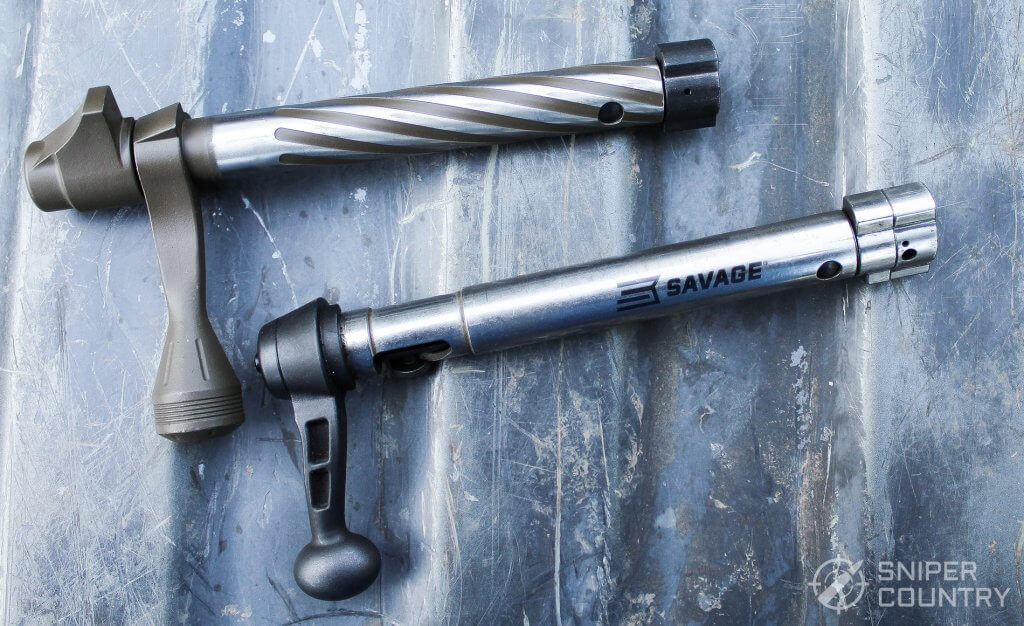
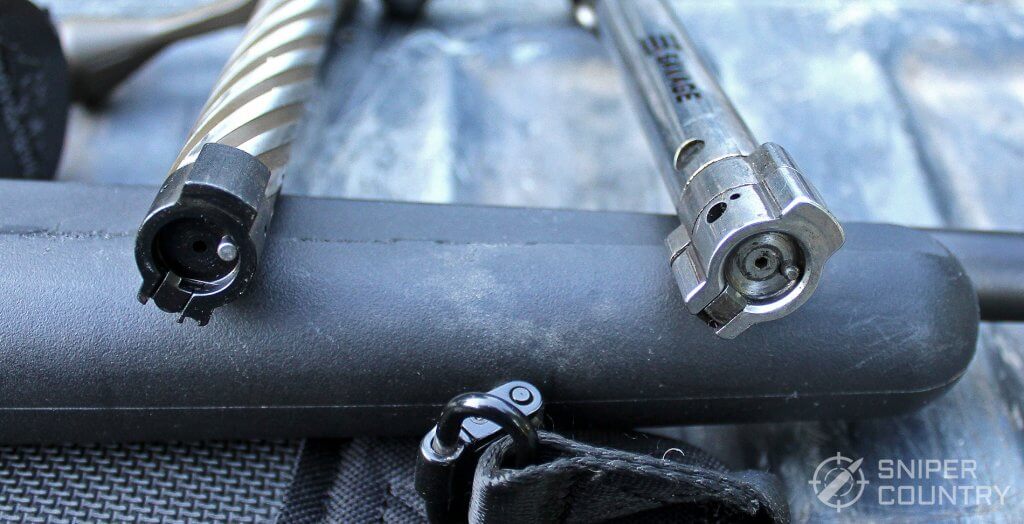
Here are the bolt releases. First, the Mossberg…
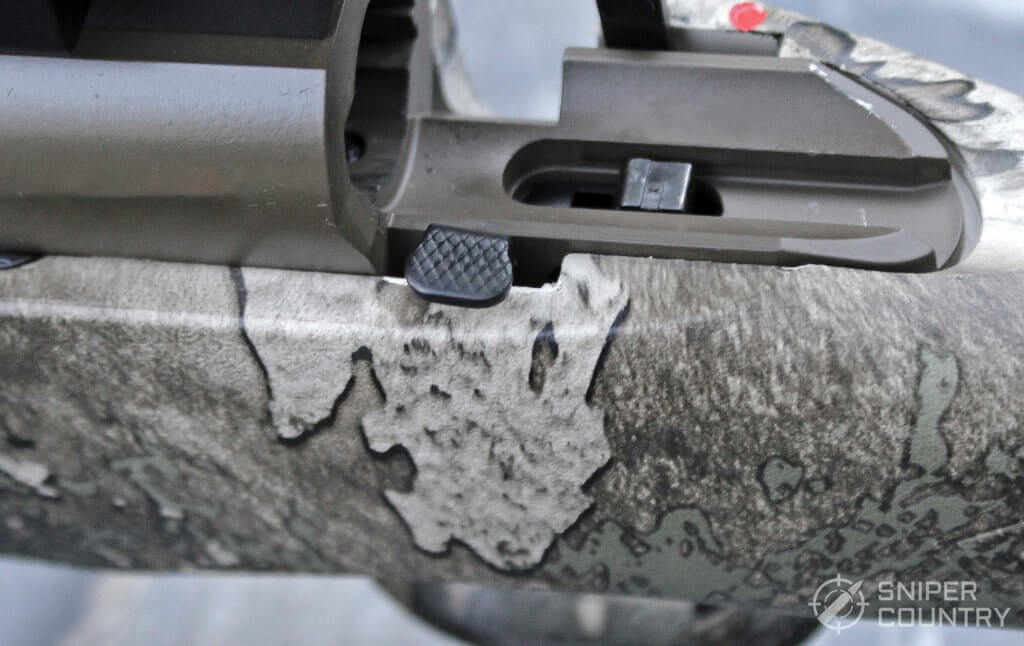
…and now the Savage:
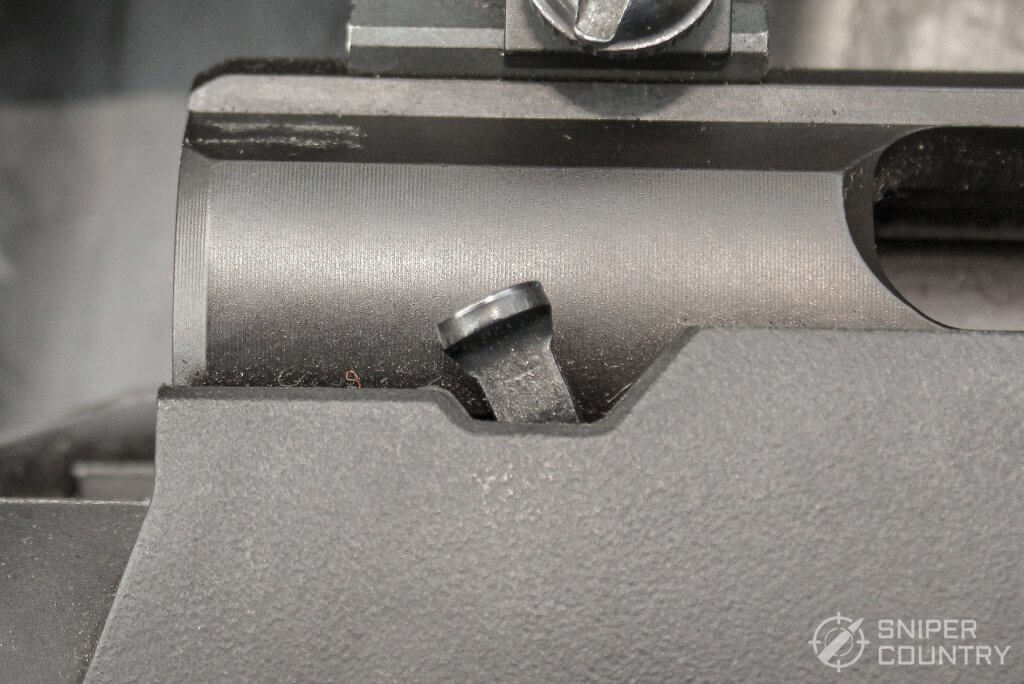
Both guns use a simple “press-this-lever-down”-type switch, but there is one big difference: the Savage requires you to pull the trigger in order to release the bolt. Until I learned the drill, I thought I needed three hands to remove the bolt. Once I figured it out, it was easy but there was a tiny learning curve. With the Mossberg, no trigger pull is needed. Just lift the bolt handle, press the bolt release and pull the bolt out.
Magazines & Safeties
The magazines are a bit different, in terms of construction. The Mossberg is a polymer and holds 5 rounds, while the Savage magazine is steel and holds four. I’ve had several pistols that use poly magazines and they worked fine, so I don’t think that’s a big deal. But, the Mossberg magazine well is polymer as well. Again, no big deal but it might matter to some. As for the safeties, the Mossberg uses a slider on the opposite side of the stock as the bolt release. This is traditional, but hard for lefties like me to operate. I like the Savage safety – it’s a slider on the tang on the wrist of the stock. Right on top where we lefties can get to it. Both safeties work fine but the Savage is more ergonomic, at least in my humble opinion.
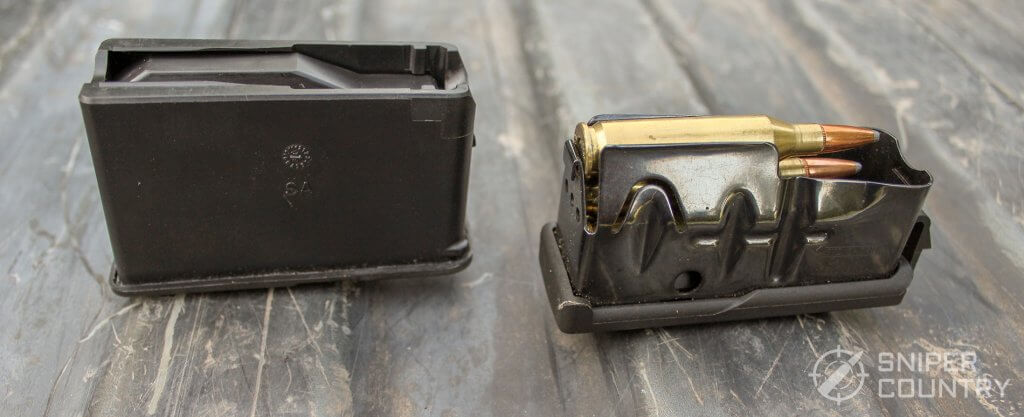
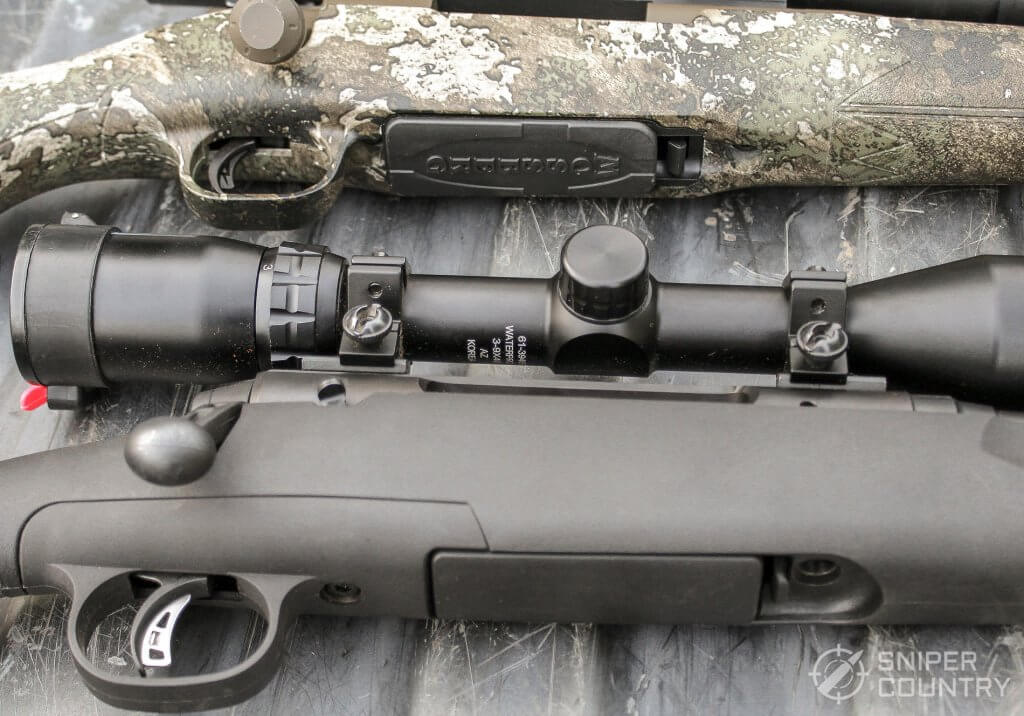
I like the fact that Savage uses a metal magazine and mag well. Another plus for me is the knob on the bolt handle – I like round knobs. Call me old-fashioned, but I like it.
Range Time
To put it in a nutshell – these guns can shoot. Collectively, more shots have gone down the Savage’s barrel than shots down the Mossberg’s. As I said above, the Mossberg had not been shot when Andy picked it up. He had not had an opportunity to shoot it until just recently, and then only for a few shots. He put a homemade box target up at his house, 100 yards out and went prone across his driveway…
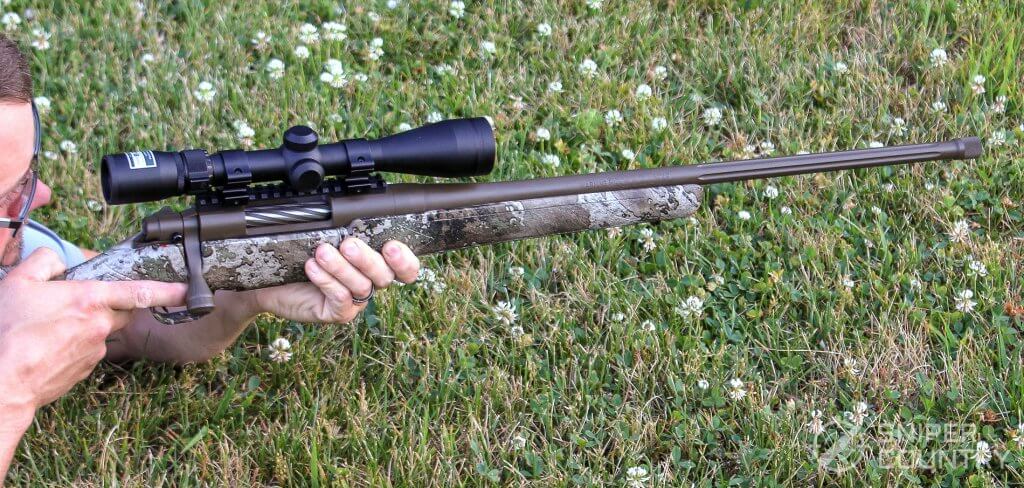
He fired a few, then went to his knee for a few more shots. It was about as informal as it could have gotten, especially since he had not adjusted the Nikon scope on his Mossberg. Later, when life slows down (does it ever?), he will shoot from an “official†bench at a real target for groups. At any rate, he didn’t do bad considering the conditions…
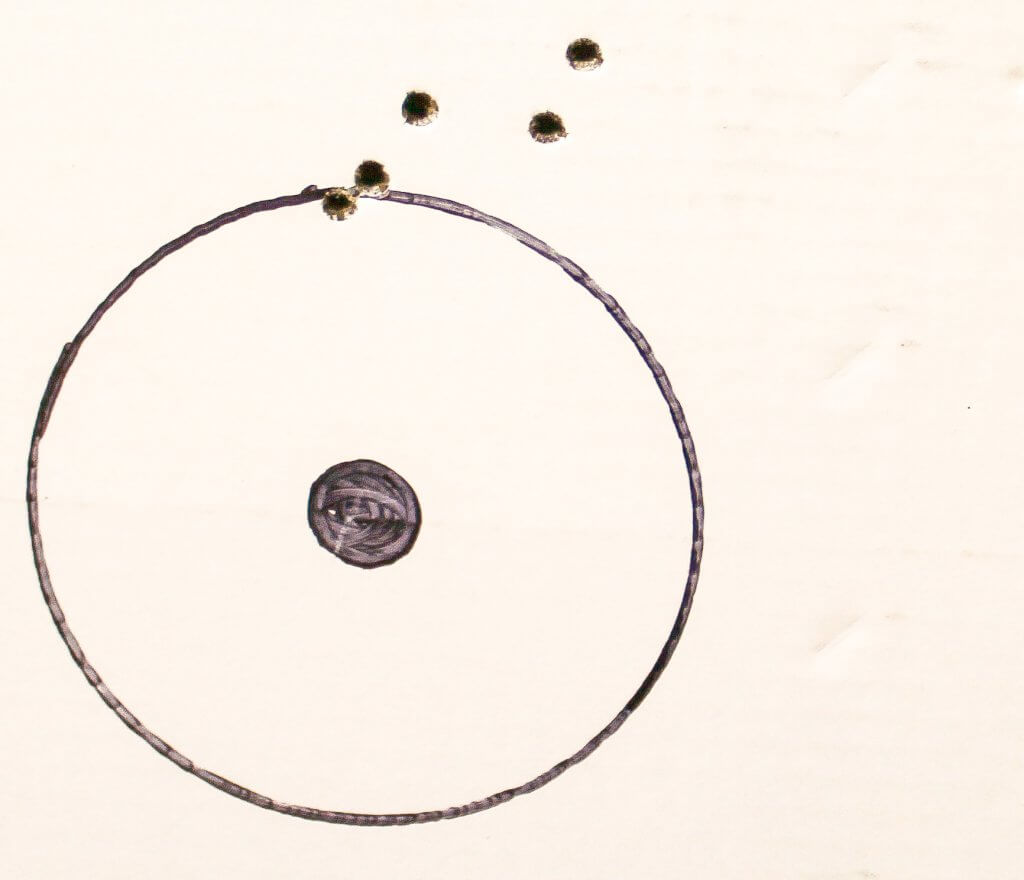
With the order he shot them, these bullets are very close to MOA accuracy. When he gets a chance to shoot for real, we’ll really see what the gun is capable of – he’s a very good shot. The only ammo he’d been able to get was some S&B 108-grain FMJ ammo he’d picked up with the gun. I have a box of Fiocchi stuff I want him to shoot – that is very good, consistent ammo. We will do that the first chance we have.
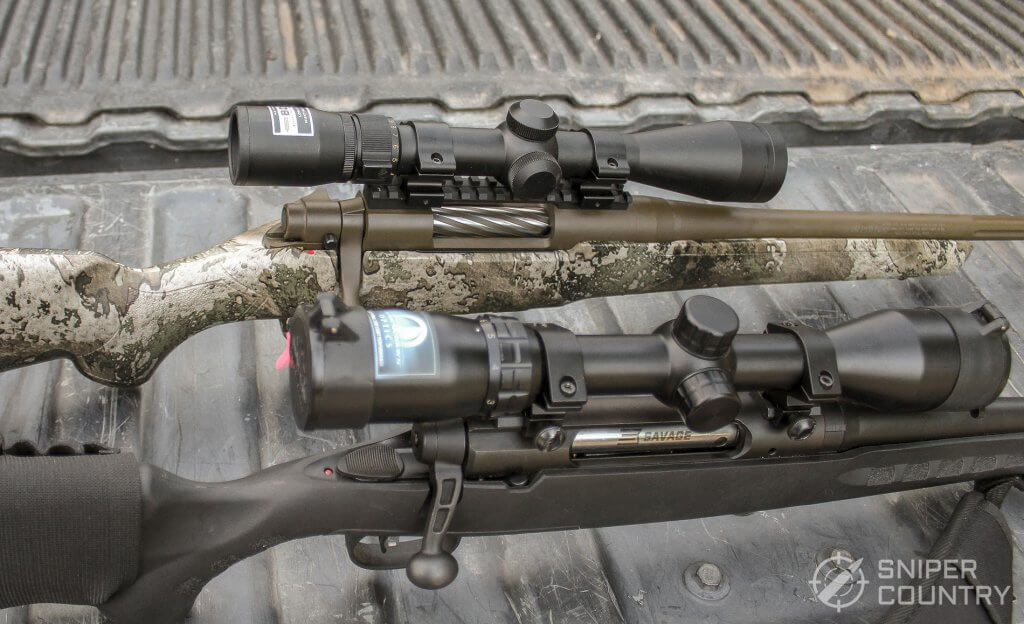
As for my Savage, I’d put probably the equivalent of 7-8 boxes of ammo through it, both factory and my handloads. It seems that my gun likes a 100-grain soft point over 42 grains of 4350 powder. It just kisses the 3,000 fps mark and is very accurate. However, this target was shot with Winchester 100-grain Super-X ammo, as the target shows. The 3-shot group is under a half inch at 100 yards…not too shabby, considering that I’m better with handguns as a rule. It seems that the Savage Axis owners that I’ve been able to talk to have experienced sub-MOA groups with their stock, factory rifles. That says a lot for the company.
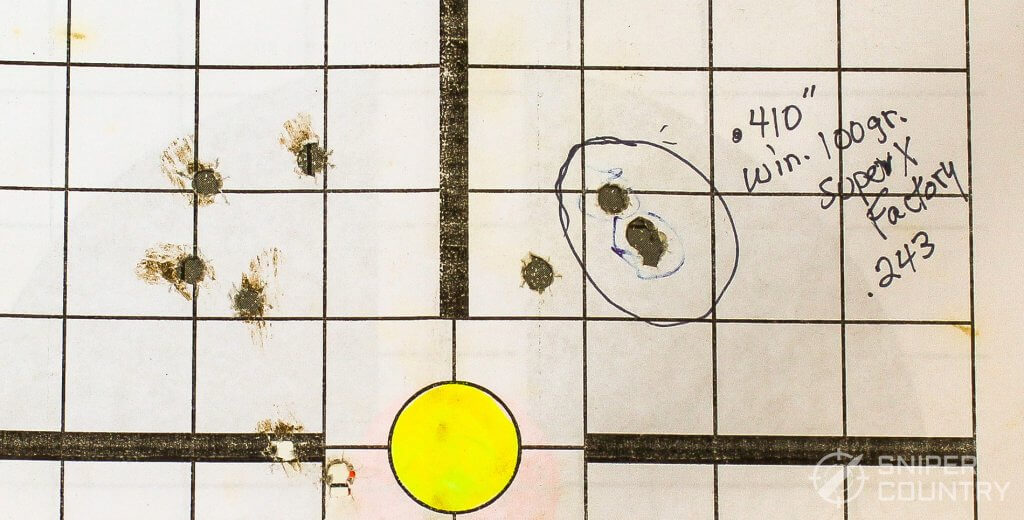
I guess that if even both guns shot only MOA, they would still be putting bullets into a 4-inch circle at 400 yards. So, these groups will do for now but the fun comes in the experimentation as we all know. Plus, deer are unpredictable – the last one I shot with this rifle was at about 70 yards. That’s revolver territory! Anyway, we will work up loads using my chronograph and back yard range. Again, that’s the fun part.
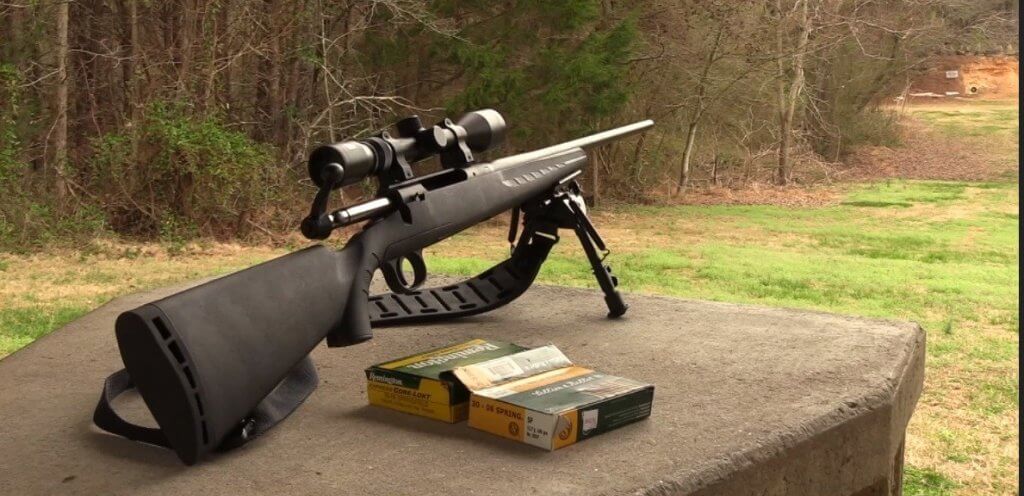
A versatile rifle. Here it is in .30-06 with a bipod – lethal on deer, or just about most anything that stalks the lower 48. Note the ventilated buttstock pad…it works.
Summing Up
I have tried, with this little exercise, to review the Savage Axis IIXP by itself and in comparison with another budget rifle. I purposely did not get into great detail, with micrometer measurements, facts, figures, etc. because I wanted this to be (as it’s titled) a quick review for those maybe considering picking up a rifle without spending a whole lot of money. Either of these guns would suffice for hunting deer-sized game at reasonable yardages or going into a coyote-rich environment and reducing their numbers a bit, but I really like my Savage.
I liked the threaded barrel and easier bolt removal of the Mossberg. But I think the Savage has it over its competitor with its tang-mounted safety, “more-grippable†stock, slightly heavier weight (still under 8 pounds) and the non-binding bolt. And, let us not forget the fact that it will shoot a 3-shot group at 100 yards tighter than ½ inch. This is a heck of a lot of gun for the money.
If you’ve had experience with the Savage Axis IIXP (or any Savage rifle, for that matter), feel free to chime in below. As always, shoot whenever you can and be safe!
Updated: July 2021

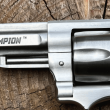




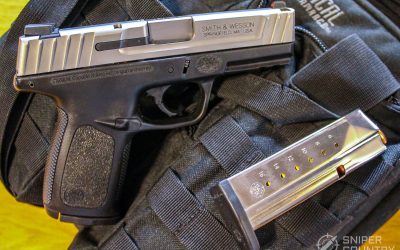

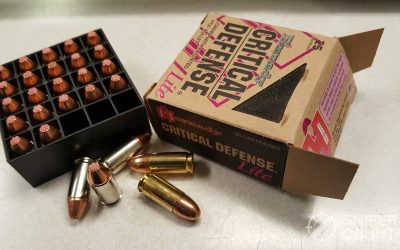
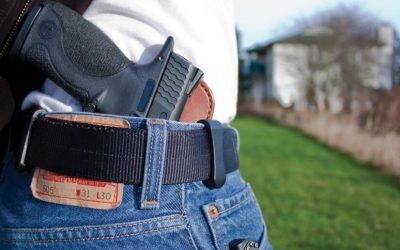
![9mm Glock Models [Ultimate Guide]](https://www.snipercountry.com/wp-content/uploads/2018/10/Glock-17-vs-Glock-19-vs-Glock-26-vs-Glock-41-vs-Glock-43-WM-400x250.jpg)
![Handgun Caliber Chart [2025 Ultimate Guide]](https://www.snipercountry.com/wp-content/uploads/2018/10/Handgun-Caliber-Comparison-400x250.jpg)
![Rifle Calibers [Ultimate Guide]](https://www.snipercountry.com/wp-content/uploads/2018/12/Header-1900-400x250.jpg)

